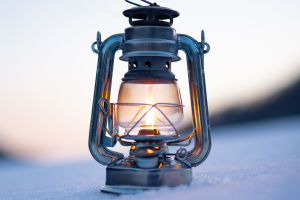The History of Sailboats
Hey, Lykkers! Imagine the sight of a sailboat gliding gracefully across the water—a timeless symbol of freedom and adventure.
From the ancient mariners who braved uncharted waters to the sleek modern yachts that define luxury today, sailboats have played a crucial role in shaping human history.
Let's embark on a journey through time, exploring the evolution of sailboats and their impact on trade, exploration, and recreation.
The Dawn of Sail: Ancient Mariners
The story of sailboats begins thousands of years ago, with the earliest known sailing vessels dating back to ancient Egypt around 3500 BCE. These primitive boats, powered by simple square sails, were essential for trade along the Nile River. As maritime technology advanced, the Phoenicians, renowned as master shipbuilders and traders, developed more sophisticated sailboats that could navigate the Mediterranean Sea. These vessels, known as galleys, had both sails and oars, allowing them to travel vast distances and establish trade routes that connected civilizations.
Medieval Exploration: Age of the Caravel
Fast forward to the 15th century, when Europe was on the cusp of an age of exploration. The caravel, a small, highly maneuverable sailing ship developed by the Portuguese, became the vessel of choice for explorers like Christopher Columbus and Vasco da Gama. With its triangular lateen sails, the caravel could sail against the wind, making it ideal for long voyages across the Atlantic and around Africa. These ships opened new trade routes, brought different cultures into contact, and led to the discovery of new lands.
The Golden Age of Sail: Tall Ships and Clippers
The 17th and 18th centuries marked the golden age of sail, a period when tall ships ruled the seas. These massive vessels, with multiple masts and billowing sails, were the workhorses of international trade. Ships like the Spanish galleon and the British East Indiaman carried valuable cargoes—spices, silk, tea, and more—across the oceans, fueling the growth of empires. The 19th century saw the rise of the clipper ship, a fast and elegant sailing vessel that dominated the trade routes between Europe, America, and the Far East. Clippers, with their sleek lines and towering masts, were celebrated for their speed and beauty, symbolizing the pinnacle of sail-powered commerce.
The Transition to Modern Yachts
As steam power began to revolutionize transportation in the late 19th century, sailboats gradually transitioned from commercial workhorses to recreational vessels. The wealthy elite embraced yachting as a leisurely pursuit, and sailing clubs and regattas became popular in Europe and America. The America's Cup, first held in 1851, became the ultimate test of sailing skill and innovation. Modern yachts, with their cutting-edge designs and advanced materials, represent the fusion of tradition and technology. Today, sailing is enjoyed by millions around the world, offering a unique blend of relaxation, adventure, and connection to nature.
Sailboats Today: More Than Just a Hobby
In the 21st century, sailboats continue to inspire awe and admiration. Whether it's the thrill of racing in a regatta, the serenity of cruising along a coastline, or the challenge of circumnavigating the globe, sailing remains a beloved pastime. Sailboats have also become symbols of environmental consciousness, as wind-powered vessels offer a sustainable alternative to fossil fuel-driven boats. From ancient mariners to modern yachts, the sailboat's journey through history is a testament to human ingenuity, resilience, and the enduring allure of the sea.
So, Lykkers, the next time you see a sailboat on the horizon, remember its rich heritage and the countless adventures it has enabled throughout history. Whether you're an experienced sailor or a landlubber, the story of sailboats is one that continues to captivate and inspire.


